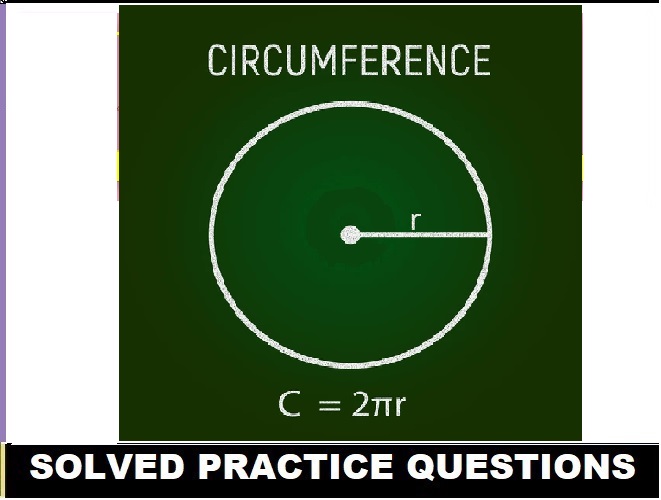Srijan Class-9 Waste Generation and Management ICSE Biology Solutions Ch-17. We Provide Solutions of Concept Check 1 to 2. Very Short Ans, Short Ans, Long Ans, Multiple Choice Type Application / Skill ( Figure Based ) Questions by expert teachers as per ICSE board guidelines. Visit official Website CISCE for detail information about ICSE Board Class-9.
Solutions of Srijan Class-9 Waste Generation and Management ICSE Biology Ch-17
| Board | ICSE |
| Publications | Srijan Publication |
| Subject | Biology |
| Class | 9th |
| writer | Veer Bala Rastogi |
| Chapter-17 | Waste Generation and Management |
| Topics | Solutions of Concept Check 1 to 2, Very Short Ans, Short Ans, Long Ans, MCQ, Application Skill Based Questions |
| Edition | 2021-2022 |
Concept Check 1 (Page 202)
(Ch-17 Waste Generation and Management Srijan ICSE Class-9 Biology Solutions )
Fill in thee blanks with suitable words.
Q-1. Based on the impact on human health, the waste can be ………….. , ……………… and …………….. .
Q-2. The phenomenon of eutrophication in waterbodies is the result of …………. waste.
Q-3. The domestic and community wastes are collectively known as ……………..
Q-4. Liquid wastes include ……………….. from different industries.
Q-5. Radioactive waste is …………. type of waste.
Answer:
1. Nontoxic, Toxic, Pathogenic
2. Agricultural
3. Municipal solid waste
4. Effluents
5. Electronic
Concept Check 2 (Page 204)
(Ch-17 Waste Generation and Management Srijan ICSE Class-9 Biology Solutions )
Answer the following questions briefly.
Q-1. Why is sanitary landfilling better than open dumping of waste?
Ans-A sanitary landfill is a pit with a protected bottom where trash is buried in layers and compressed to make it more solid. The main purpose of sanitary landfills is to ensure waste is safe by reducing the harm from accumulated waste and allowing safe decomposition.
Q-2. Name the three categories into which solid waste needs to be segregated.
Ans- The three categories of wastes under segregation are: Reusable , Degradable , Non-degradable
Q-3. What remains when solid organic waste is incinerated?
Ans- Incineration of waste materials converts the waste into ash, flue gas and heat. The ash is mostly formed by the inorganic constituents of the waste and may take the form of solid lumps or particulates carried by the flue gas
Q-4. Define composting.
Ans-Composting means breaking down organic material. For example, food scraps, grass clippings, leaves, animal manure, and coffee grounds are all compostable. Composting is useful for making inexpensive fertilizer for lawns, gardens and farms
A. VERY SHORT ANSWER TYPE, (Page 206)
(Ch-17 Waste Generation and Management Srijan ICSE Class-9 Biology Solutions )
Q-1. Give one word for the following.
(a) Machines used to burn hospital waste at high temperature.
(b) Special pits for dumping solid waste.
(c) Liquid waste from kitchen and toilets.
Answer:
(a) Incineration
(b) Open dumping
(c) Domestic waste
Q-2 State whether the following statements are true or false.
(a) Today many countries of the world are faced with the dual problems of huge volumes of waste generation and the hazardous nature of the wastes.
(b) Composting is a useful method for the disposal of nonbiodegradable waste.
(c) Sanitary landfilling is a widely used method for municipal solid waste management.
Answer:
(a) True
(b) False
(c) False
3. Match the columns.
| Column A | Column B |
| (a) Land filling | (i) Biodegradable waste |
| (b) Composting | (ii) Controlled burning |
| (c) Colour-coded bags | (iii) Drainage |
| (d) Incineration | (iv) Particulate matter |
| (e) Effluents | (v) Biomedical waste |
| (f) Electrostatic precipitator | (vi) Land reclamation |
Answer:
| Column A | Column B |
| (a) Land filling | (vi) Land reclamation |
| (b) Composting | (i) Biodegradable waste |
| (c) Colour-coded bags | (v) Biomedical waste |
| (d) Incineration | (ii) Controlled burning |
| (e) Effluents | (iii) Drainage |
| (f) Electrostatic precipitator | (iv) Particulate matter |
B. Short Answer Type Questions (Page 206)
(Ch-17 Waste Generation and Management Srijan ICSE Class-9 Biology Solutions )
1. Differentiate between the following.
(a) Biodegradable and non-biodegradable waste
Ans- Biodegradable material contains food waste like vegetable and fruit peels, dead plants and animals, egg shells, chicken, garden waste paper materials, etc. Non-biodegradable things include of plastics, polystyrene, plastic, metals, and aluminum cans, toxic chemicals, paints, tyres
(b) Hazardous and nonhazardous waste
Ans-Many types of medical waste are considered hazardous. However, the majority of medical waste (85%) is not classified as hazardous. Examples of non hazardous medical waste include plastic packaging, clean glass and plastic, paper and cardboard, and office products
(c) Pathogenic and nonpathogenic waste
Ans-The Pathogenic bacteria is a biological agent that causes disease to the host. They are often referred to as Infectious agents, so they have a capability to invade inside the host cells. Non- pathogenic bacteria inhabit the gut environment. These microbes are referred to as gut flora, they live outside the body cells
Q-2. Give reasons for the following.
(a) Untreated sewage and factory effluents should not be released into water resources.
Ans-The untreated industrial effluent continuously contaminates the surface water in the streams and the lakes/tanks. This causes sedimentation of contaminants and the investigations show very high concentration of PHEs in both stream and lake sediments
(b) Automobile exhaust cause irritation of eyes and throat.
Ans- Inhalation of SO irritates the nose, throat, and airways to cause coughing, wheezing, shortness of breath, or a tight feeling around the chest. The effects of sulphur dioxide are felt just after 10-15 min of inhalation.
(c) Kitchen and domestic solid waste needs to be segregated before disposal.
Ans- Segregation of waste into different types based on its composition helps in better management of waste, including quick disposal and better processing. This reduces the overall burden of waste on the face of the earth, thereby reducing pollution and curbing environmental degradation
(d) We should avoid using plastic bags.
Ans-It takes 1000 years for polyethylene bags to degrade/break down Plastic bags don’t biodegrade, they photo-degrade, breaking down into smaller and smaller toxic bits contaminating soil and waterways. … Plastic bags clog both our solid waste facilities and storm drains. Plastic is the largest source of ocean litter
(e) Open dumping of solid waste is very harmful.
Ans-Open dumping of Municipal Solid waste is most common and widely practiced method for disposal. Open dumps cause degradation of environment because of open burning, groundwater and surface water pollution, soil pollution and decrease in vegetation abundance
(f) Domestic waste is called municipal waste.
Ans-Municipal Solid Waste (MSW)—more commonly known as trash or garbage—consists of everyday items we use and then throw away, such as product packaging, grass clippings, furniture, clothing, bottles, food scraps, newspapers, appliances, paint, and batteries. This comes from our homes, schools, hospitals, and businesses
C. Long Answer Type Questions (Page 206)
(Ch-17 Waste Generation and Management Srijan ICSE Class-9 Biology Solutions )
Q-1 Give two examples each of biodegradable waste, to waste and biomedical waste.
Ans-Sources. Biodegradable waste can be found in municipal solid waste (sometimes called biodegradable municipal waste, or as green waste, food waste, paper waste and biodegradable plastics). Other biodegradable wastes include human waste, manure, sewage, sewage sludge and slaughterhouse waste
Q-2. What are the essential steps involved in the scientific management of municipal solid waste?
Ans- Essential Steps Involved in Waste Management
- Wastes management involves the following steps: Reduction of wastes. …
- This can be achieved by the following steps:
- Source reduction:
- Concentration:
- Segregation :
- Recycling commonly refers to two things :
- Reuse :
- Recycling :
Q-3. Write descriptive notes on each of the following:
(a) Domestic waste
Ans-Domestic waste is waste that is generated as a result of the ordinary day-to-day use of a domestic premise and is either: … collected by or on behalf of a local government as part of a waste collection and disposal system
(b) Commercial waste
Ans-Commercial waste consists of waste from premises used mainly for the purposes of a trade or business or for the purpose of sport, recreation, education or entertainment, but excluding household, agricultural or industrial waste
(c) Industrial waste
Ans-Industrial waste : Industrial waste is the waste that is produced from industries during the manufacturing process. For example pieces of metals, plastic, chemicals, etc. Industrial wastes are also a major source of environmental pollution. They lead to air and water pollution
(d) Agricultural waste
Ans- Agricultural waste is waste produced as a result of various agricultural operations. It includes manure and other wastes from farms, poultry houses and slaughterhouses; harvest waste; fertilizer run- off from fields; pesticides that enter into water, air or soils; and salt and silt drained from fields
Q-4. Which category does plastic belong to? Why should plastic bags be banned?
Ans-Plastic bags are a major cause of environmental pollution. Plastic as a substance is non-biodegradable and thus plastic bags remain in the environment for hundreds of years polluting it immensely. It has become very essential to ban plastic bags before they ruin our planet completely.
Q-5. List various reasons why proper waste management is required.
Ans-Waste management reduces the effect of waste on the environment, health, and so on. It can also help reuse or recycle resources, such as; paper, cans, glass, and so on. There is various type of waste management that include the disposal of solid, liquid, gaseous, or hazardous substances
Q-6. Write explanatory notes on each of the following:
(a) Segregation of domestic waste
Ans- Waste segregation” means dividing waste into dry and wet. Dry waste includes wood and related products, metals and glass. … Each waste goes into its category at the point of dumping or collection, but sorting happens after dumping or collection. Segregation of waste ensures pure, quality material
(b) Scrubber
Ans-A scrubber is a device or process for removing pollutants from industrial exhaust streams. It is an air-stream pollution control device which uses liquid spray to remove solid and liquid particulate matter (which washes out) and gaseous pollutants (which are either absorbed or chemically neutralized)
(c) Precipitator
Ans-An electrostatic precipitator (ESP) is defined as a filtration device that is used to remove fine particles like smoke and fine dust from the flowing gas. It is the commonly used device for air pollution control. They are used in industries like steel plants, thermal energy plants.
Q-7. What is incineration? Why have objections been raised against the incineration of waste materials including biomedical wastes?
Ans-Incineration is a method of treating waste which involves the combustion of the organic substances found in waste materials. The solid mass of the original waste is reduced by around 80 to 85%, while the volume is reduced by between 95 and 96%
D. Multiple Choice Questions (Page 206)
(Ch-17 Waste Generation and Management Srijan ICSE Class-9 Biology Solutions )
Choose the correct answer.
Q-1. The rapidly increasing harmful waste is
(a) e-waste
(b) Municipal sewage
(c) Pesticides
(d) Plastics
Answer: (d) Plastics
Q-2. One of the following is a conveniently reusable waste
(a) Fly ash waste
(b) Old newspapers
(c) Broken glass
(d) Medical waste
Answer: (b) Old newspapers
Q-3. Which one of the following is nonbiodegradable?
(a) Sewage
(b) DDT
(c) Livestock waste
(d) Vegetable market garbage
Answer: (b) DDT
Thanks



It is very useful for me to complete my notes 🌸
thanks